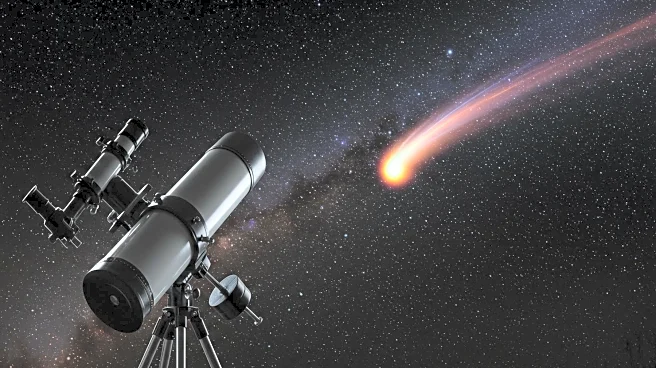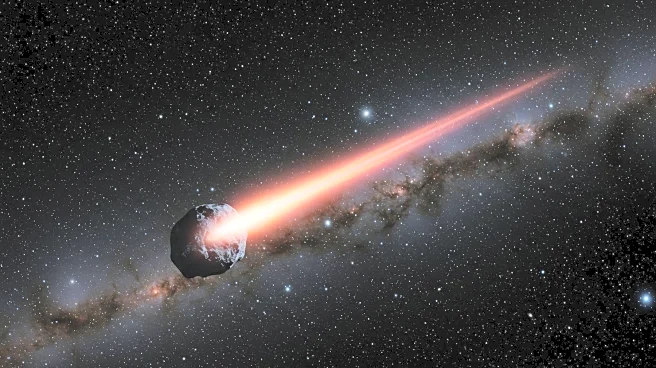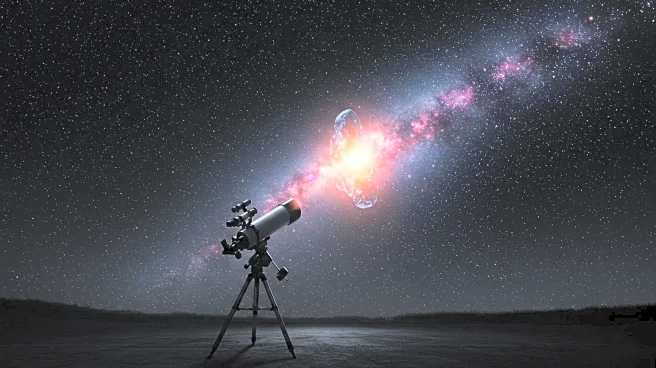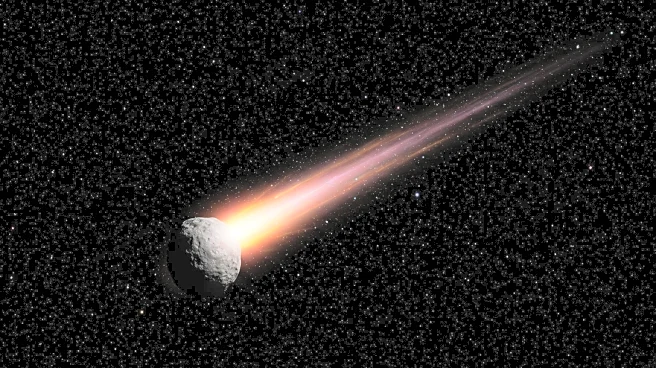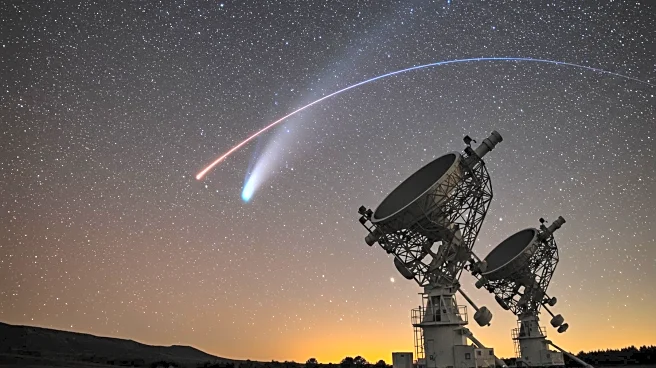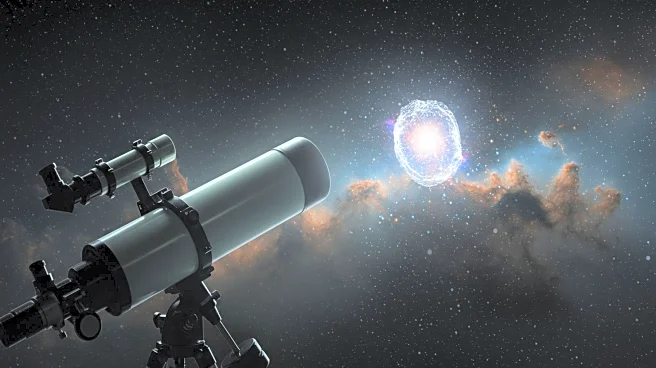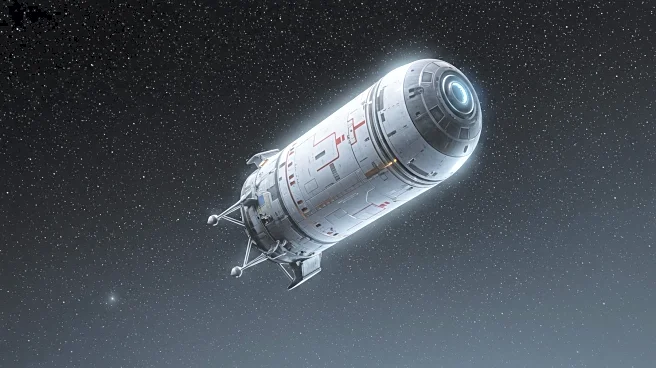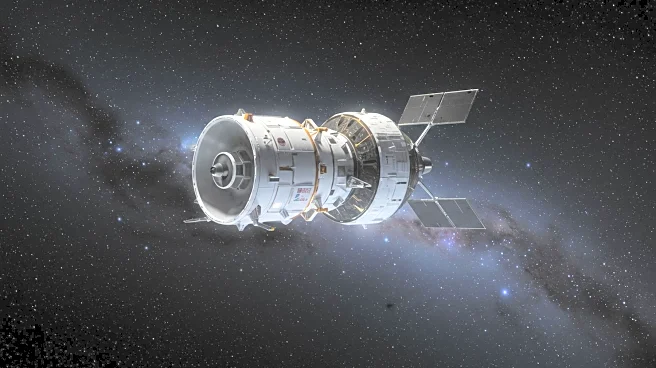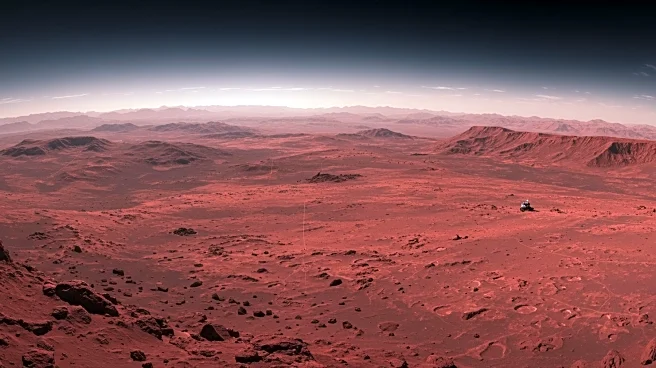What is the story about?
What's Happening?
A newly discovered interstellar object, named 3I/Atlas, is currently moving through the solar system at a speed of approximately 61 kilometers per second. Detected in July, 3I/Atlas is the third known interstellar object observed, following 'Oumuamua in 2017 and 2I/Borisov in 2019. The Hubble Space Telescope has captured images of this object, allowing scientists to study its size and chemical composition. Dr. Rebecca Allen from Swinburne's Space Technology and Industry Institute highlights the rarity of such an object for scientific study. The comet's name is derived from 'i' for interstellar, '3' as the third detected object, and Atlas from the Asteroid Terrestrial-impact Last Alert System that identified it. While some speculate about alien origins, scientists, including Dr. Laura Driessen from the University of Sydney, assert that 3I/Atlas is likely a comet, not an alien craft.
Why It's Important?
The study of 3I/Atlas presents a unique opportunity for scientists to analyze materials from outside our solar system. The comet's 'coma,' formed by the sun's heat releasing dust and gas, provides chemical signatures that can be studied using spectroscopy. This analysis could reveal whether the comet's origin solar system had conditions similar to ours or was entirely different. The Hubble images have helped estimate the comet's diameter, which ranges from 320 meters to less than 5.6 kilometers. Understanding the composition and behavior of interstellar objects like 3I/Atlas can enhance knowledge of cosmic phenomena and the formation of solar systems.
What's Next?
3I/Atlas is expected to pass through the inner solar system, between Mars and Earth's orbit, before flying past the sun. It is on a hyperbolic orbit, meaning it is not gravitationally bound to the sun and will eventually exit the solar system. The closest approach to the sun is anticipated between October and December, at a distance of about 210 million kilometers. NASA estimates the closest distance to Earth will be approximately 270 million kilometers. Scientists will continue to monitor its trajectory and analyze data as it moves through the solar system.
Beyond the Headlines
The observation of 3I/Atlas could lead to advancements in understanding interstellar travel and the potential for future exploration of objects beyond our solar system. The ethical and scientific implications of studying such objects may influence future space missions and international collaboration in space research.
AI Generated Content
Do you find this article useful?
